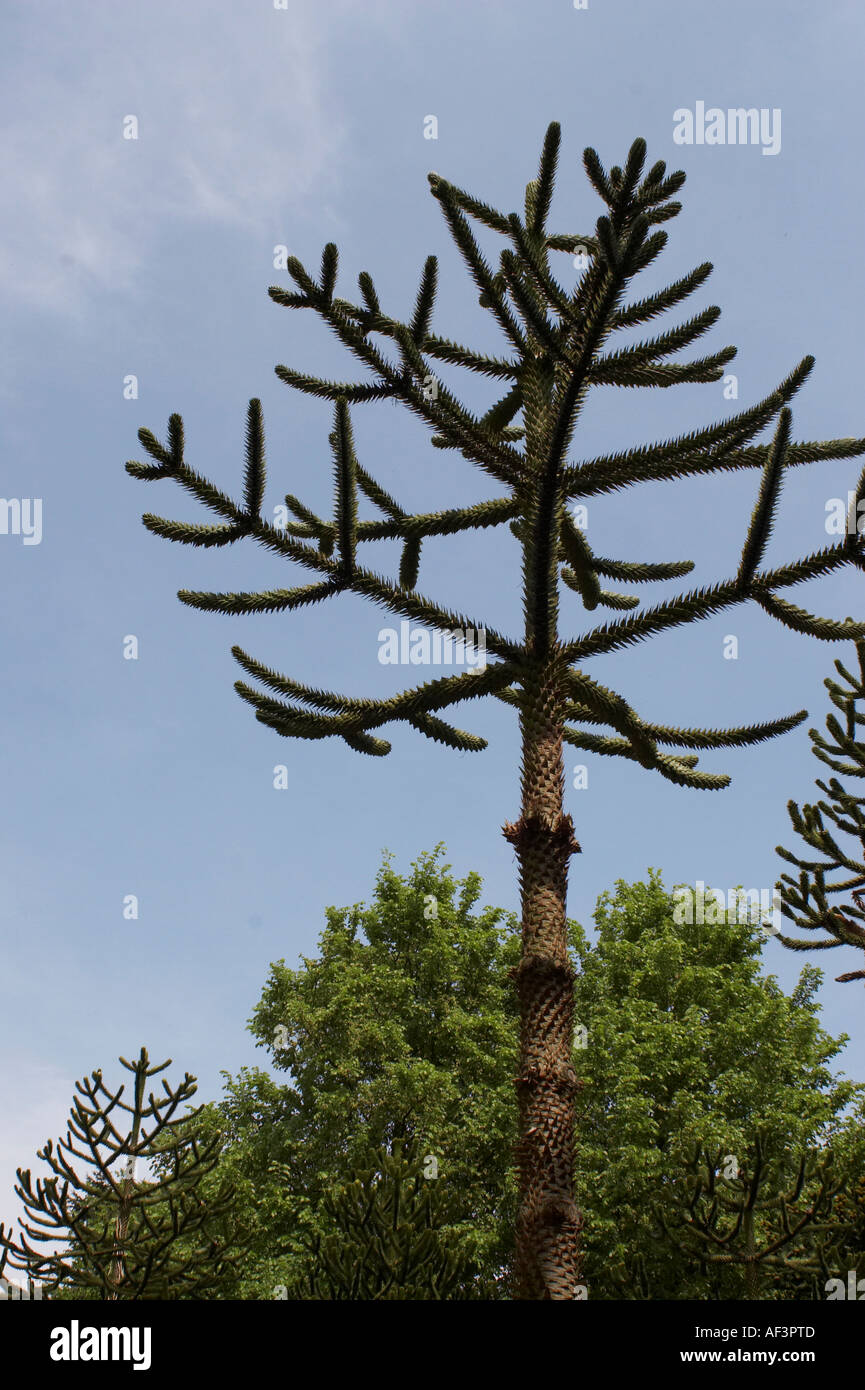Araucariaceae - Araucaria araucana. Joseph Bank's Pine, Chile Pine

Image details
Contributor:
Piotr & Irena Kolasa / Alamy Stock PhotoImage ID:
AF3PTDFile size:
52.6 MB (2.1 MB Compressed download)Releases:
Model - no | Property - noDo I need a release?Dimensions:
3498 x 5256 px | 29.6 x 44.5 cm | 11.7 x 17.5 inches | 300dpiMore information:
Araucaria araucana (Pehuén or Monkey-puzzle) is the hardiest species in the conifer genus Araucaria. It is native to central Chile and west central Argentina, and is an evergreen tree growing to 40 m tall and 2 m trunk diameter. It is an example of a living fossil. The leaves are thick, tough and scale like, triangular, 3-4 cm long, 1-3 cm broad at the base, and with razor-sharp edges and tip. They persist for 10-15 years or more, so cover most of the tree except for the older branches. t is usually dioecious, with the male and female cones on separate trees, though occasional individuals bear cones of both sexes. The male (pollen) cones are oblong and cucumber-shaped, 4 cm long at first, expanding to 8-12 cm long by 5-6 cm broad at pollen release. Like all conifers it is wind pollinated. The female (seed) cones, which mature in autumn about 18 months after pollination, are globose, large, 12-20 cm diameter, and hold about 200 seeds. The cones disintegrate at maturity to release the 3-4 cm long nut-like seeds, which are then dispersed by jays and squirrels. It prefers well drained, slightly acidic, volcanic soil but will tolerate almost any soil type provided drainage is good. It prefers temperate climates with abundant rainfall, tolerating temperatures down to about −20 °C. It is far and away the hardiest member of its genus, and the only one that will grow in mainland Britain, or in the United States away from the extreme south. In Canada, Vancouver and Victoria have many fine specimens; it also grows on the Queen Charlotte Islands. It is tolerant of salt spray, but does not like exposure to pollution. It is a popular garden tree, planted for its unusual effect of the thick, 'reptilian' branches with a very symmetrical appearance. The seeds are edible, similar to large pine nuts, and are extensively harvested in Chile. The tree has some potential to be a food crop in other areas in the future, thriving in climates with cool oceanic summers (e.g. western Scotland)